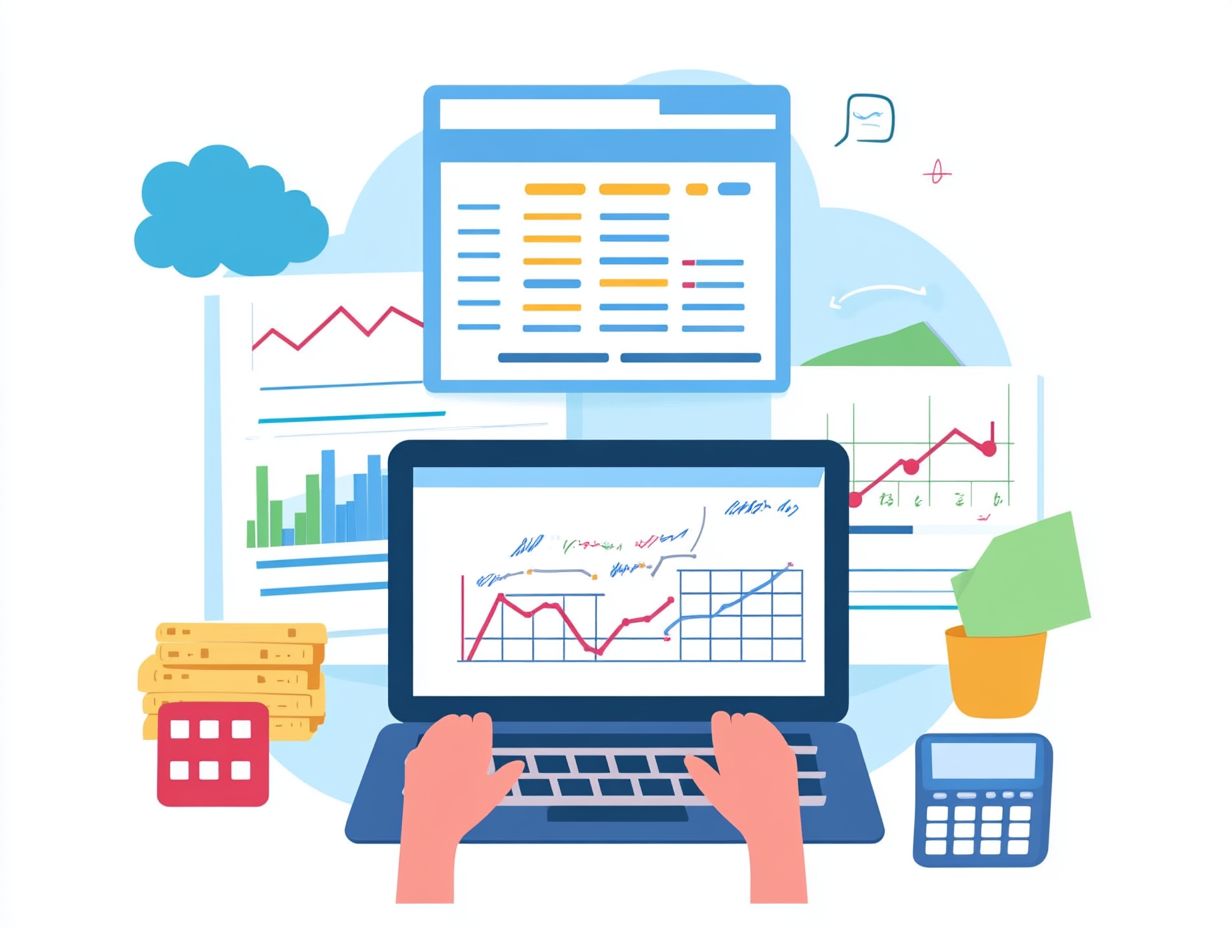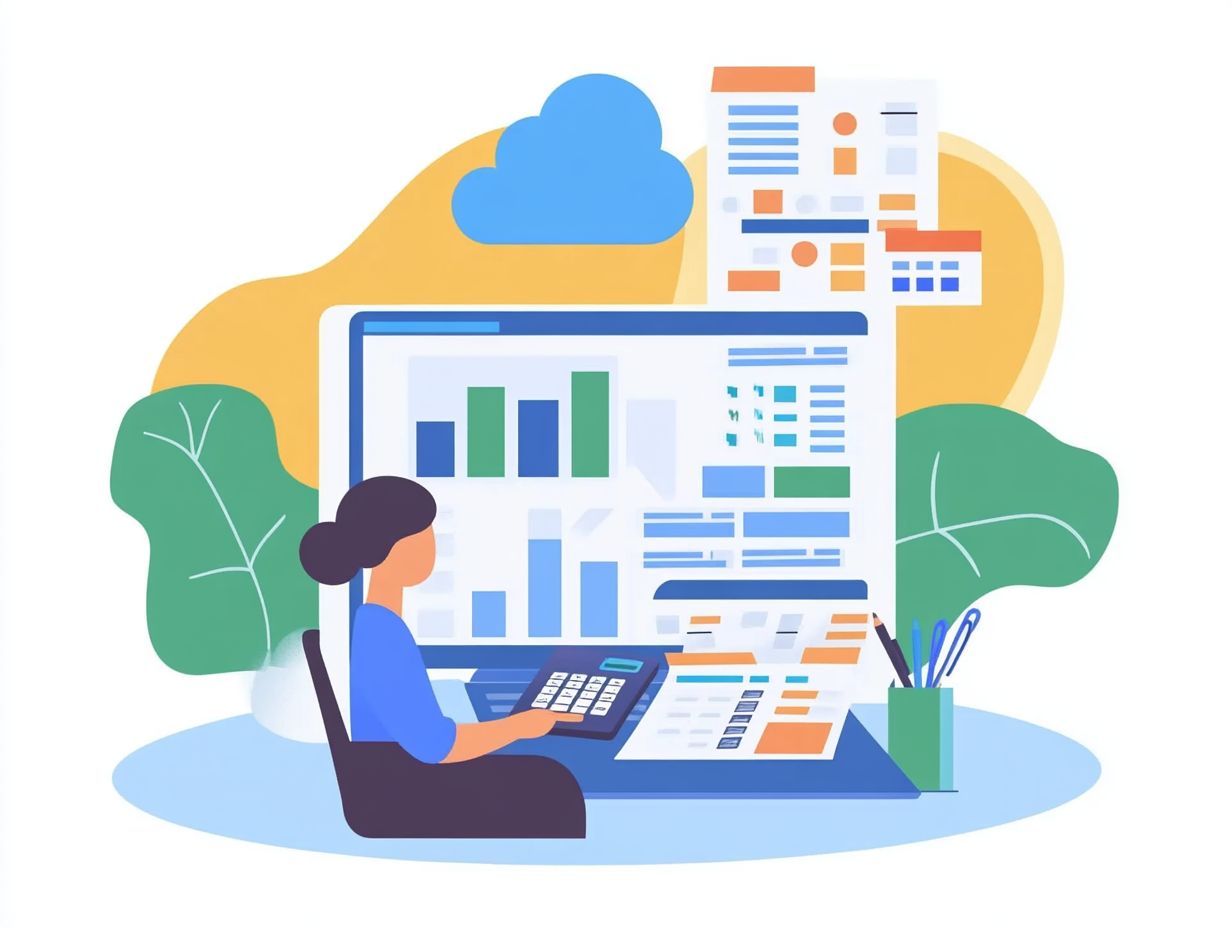How to Analyze Cloud Service Costs
As you navigate the growing realm of cloud computing, grasping the associated costs is essential for maximizing value and minimizing unnecessary expenses. Don’t miss out on saving money!
This article delves into the intricate landscape of cloud service costs. It highlights key factors that shape pricing, different types of costs you may encounter, and effective strategies for analyzing and managing these expenses.
You ll discover popular tools and best practices designed to empower you in taking control of your cloud budget. Prepare to confidently tackle the complexities of cloud costs and make informed decisions that benefit your business.
Contents
- Key Takeaways:
- Understanding Cloud Service Costs
- Factors Affecting Cloud Service Costs
- Types of Cloud Service Costs
- Methods for Analyzing Cloud Service Costs
- Tools for Tracking and Managing Cloud Service Costs
- Best Practices for Controlling Cloud Service Costs
- Frequently Asked Questions
- Why is it important to analyze cloud service costs?
- What factors should be considered when analyzing cloud service costs?
- How can I track my expenses and usage for different cloud services?
- What are some common cost optimization strategies for cloud services?
- How can I forecast future cloud service costs?
- Are there any potential challenges or limitations to analyzing cloud service costs?
Key Takeaways:

- Know the different costs of cloud services and how they affect your budget.
- Compare costs between providers and implement optimization strategies to control and reduce cloud service expenses.
- Use cost management tools and follow best practices to effectively track and manage your cloud service costs.
Understanding Cloud Service Costs
Understanding cloud service costs is essential for business leaders like you as you navigate the intricate world of cloud computing. To effectively manage expenses, it’s crucial to learn how to navigate cloud cost complexity, as financial decisions can significantly influence how you use your budget.
With numerous cloud service providers offering various pricing models, it’s crucial to undertake a complete review of cloud costs. Understanding how to implement cloud cost controls ensures you adopt cost-effective strategies that optimize resources and provide clear insight into total cloud expenditures.
This knowledge not only assists you in budget analysis but also enables your organization to make informed decisions about your cloud architecture choices.
Overview of Cloud Computing and Cost Structures
Cloud computing is revolutionizing how you manage your IT resources, offering scalable solutions through various service providers, including SaaS options. This innovative approach introduces unique cost structures that can significantly influence your budget allocations.
You have three primary models to choose from:
- Infrastructure as a Service (IaaS): Renting servers online and essential computing resources like servers and storage, typically charged based on usage.
- Platform as a Service (PaaS): A platform for development that includes hardware and software tools, often leading to fluctuating monthly subscription costs.
- Software as a Service (SaaS): Fully functional applications delivered over the internet with predictable pricing based on user count or consumption.
By understanding these various models, you ll be ready to make smart choices about which services align best with your operational goals and financial strategies.
Factors Affecting Cloud Service Costs
Several critical factors influence your cloud service costs, including your choices in cloud architecture, data transfer fees, and the pricing models provided by different cloud service providers. This makes it essential to conduct a comprehensive cloud cost analysis for effective budgeting and optimal resource utilization.
Key Variables to Consider
When analyzing cloud service costs, it’s essential to consider key variables like operational costs and infrastructure costs. For a comprehensive understanding, refer to this guide on how to conduct a cloud cost audit. This approach optimizes your resources and enhances your visibility within the cloud landscape.
Understanding your operational costs is crucial for pinpointing ongoing expenses tied to cloud services. By learning how to optimize cloud costs, you can budget effectively over time.
On the flip side, infrastructure costs encompass everything from hardware maintenance to software licensing fees. Assessing these expenditures is vital to sidestepping any unexpected financial burdens.
By leveraging effective cost metrics, you can measure performance against your investments, fostering knowledge-based decision-making.
By meticulously examining these variables, you’ll be able to identify waste, streamline your resource allocation, and ultimately achieve significant savings while ensuring high-quality service delivery.
Types of Cloud Service Costs

Understanding the various types of cloud service costs is crucial for mastering effective cost optimization and budget management strategies. This includes not only operational and infrastructure costs but also additional expenses such as data transfer fees and storage pricing models.
By grasping these elements, you enable yourself to make informed decisions that enhance your cloud investment.
Operational Costs
Operational costs include all ongoing expenses related to using cloud services. These costs cover fees for ongoing resources, maintenance, and support, making it essential to establish a robust cost analysis framework to allocate expenses effectively.
Understanding these costs is vital, as they can significantly influence your organization’s budget and resource planning. Typically, these expenses cover:
- Data storage
- Compute power
- Data transfer
- Additional services like monitoring and security
To keep tabs on these costs, leverage specialized cloud cost management tools. These tools provide insights into usage patterns, helping your team identify potential cost-saving opportunities. Act now by analyzing trends and variances to optimize your cloud expenditures and enhance overall operational efficiency.
Understanding operational costs lays the foundation for strategic financial decisions, fostering better alignment between your business objectives and cloud investments.
Infrastructure Costs
Infrastructure costs represent your investment in the physical and virtual resources needed for cloud computing. These costs are significantly shaped by your choices in cloud architecture and the pricing models offered by various cloud service providers.
Key components include the compute resources that power your applications, the storage solutions that handle data volume and accessibility, and the networking infrastructure that guarantees efficient data flow. Each element is crucial in determining your overall expenses; for example, the decision between virtual machines and serverless architecture (a model where the cloud provider manages server allocation) can profoundly impact operational performance and cost-efficiency.
To optimize your budget, measure these costs using effective metrics. By incorporating real-time monitoring tools, you can gain valuable insights into spending patterns, enabling smarter decisions that align your infrastructure investments with your strategic goals.
Methods for Analyzing Cloud Service Costs
Utilizing a range of methods to analyze cloud service costs, including robust cost comparison techniques and the advanced tools provided by cloud providers, is essential for effective budget analysis. Learning how to use analytics for cloud cost management helps you make smart financial choices and optimizes your cloud expenditures with precision and clarity.
Cost Comparison Between Providers
Conducting a cost comparison between cloud service providers is important to identify the most cost-effective solutions tailored to your operational needs and pricing models.
In today’s competitive landscape, it’s vital to recognize that not all providers deliver the same value or flexibility. Explore the various factors that influence these decisions.
For instance, assessing service offerings like storage capacity, security protocols, and user support can help you determine which provider aligns best with your operational goals. Performance metrics such as uptime reliability and speed can significantly impact your overall satisfaction and efficiency.
By systematically analyzing these elements, you can ensure you select a cloud service that not only fits within your budgetary limits but also supports your long-term growth strategies.
Consider exploring cloud cost management tools or strategies to enhance your organization’s financial viability.
Cost Optimization Strategies

Implementing effective cost optimization strategies is crucial for your organization. It helps maximize savings while optimizing resources and enhancing cloud visibility.
By focusing on adjusting your cloud resources to fit your actual needs, you can cut unnecessary expenses without compromising performance.
Adopting reserved instances can lead to significant savings for predictable workloads. You can lock in lower rates over extended periods.
Advanced cloud visibility tools let you monitor how resources are used. This helps you spot underutilized assets that can be downsized or eliminated.
This proactive strategy not only cuts costs but also turbocharges your cloud efficiency! Ultimately, this allows you to invest in innovation and growth while maintaining your organization s financial health.
Tools for Tracking and Managing Cloud Service Costs
Employing robust tools for tracking and managing cloud service costs is crucial for organizations striving to learn how to develop a cloud cost management plan and conduct effective cloud cost analysis.
This approach ensures precise cost allocation across various projects and departments. It leads to improved financial transparency and accountability.
Popular Cost Management Tools
Popular cost management tools like CloudZero, Flexera, and AWS Cost Explorer are essential for optimizing your cloud expenses. They provide invaluable insights into budget analysis and resource utilization.
These platforms help you keep track of your expenditures. They also assist in identifying underutilized resources that can be right-sized or even terminated, leading to significant cost savings.
For example, CloudZero analyzes cost drivers and forecasts spending patterns. This enables you to make well-informed adjustments. Flexera offers detailed visibility into multi-cloud environments. You can monitor expenses across various cloud providers with ease.
Meanwhile, AWS Cost Explorer equips you with powerful visualization tools. These tools help you understand your spending trends over time, making it simpler for you to establish accurate budgets and implement effective financial governance strategies.
Best Practices for Controlling Cloud Service Costs
Implementing best practices for managing cloud service costs is essential for you. This is especially important if you’re aiming to enhance cloud visibility, achieve substantial cost savings, and effectively oversee both project and operational expenses.
A strategic approach streamlines your budgeting process. It enables your organization to maximize the value derived from cloud investments.
Tips for Reducing Costs and Maximizing Value
To effectively reduce costs and maximize value from cloud services, prioritize strategies that enhance resource optimization, increase cloud visibility, and involve thorough budget analysis.
By automating scaling processes, you ensure that resources are only utilized when needed. This minimizes waste and cuts unnecessary expenses.
Don’t overlook the discounts offered by cloud providers. These can significantly contribute to your savings, particularly when you commit to long-term contracts.
Optimizing resource allocation through careful monitoring and analysis allows you to identify underutilized resources that can be downsized or eliminated altogether.
By implementing these targeted strategies, you streamline your cloud expenditure and position yourself for smarter financial management in an increasingly digital landscape.
Frequently Asked Questions

Why is it important to analyze cloud service costs?
Analyzing cloud service costs is important because it allows you to understand and manage your expenses. Learning how to conduct a cloud cost analysis helps you identify areas for cost optimization and make informed decisions on which services to invest in.
What factors should be considered when analyzing cloud service costs?
Some important factors to consider include the type of service (SaaS, PaaS, IaaS), usage metrics, storage needs, and pricing models.
How can I track my expenses and usage for different cloud services?
Track your expenses using cost management tools from your cloud provider. For example, try AWS Cost Explorer or Google Cloud Billing. You can also consider third-party tools.
What are some common cost optimization strategies for cloud services?
Common strategies include adjusting your resources to match your needs, using discounted payment options, and leveraging automation to save time.
Regularly review your usage to stay aligned with demand.
How can I forecast future cloud service costs?
To forecast costs, use calculators from your cloud provider and analyze past usage data. Additionally, consider checking what the costs of cloud services might entail while accounting for any upcoming changes in your business needs to refine your predictions.
Are there any potential challenges or limitations to analyzing cloud service costs?
Yes, challenges include complex pricing models and the difficulty of predicting future costs. Constant monitoring and adjustments are essential to keep your costs optimized.






